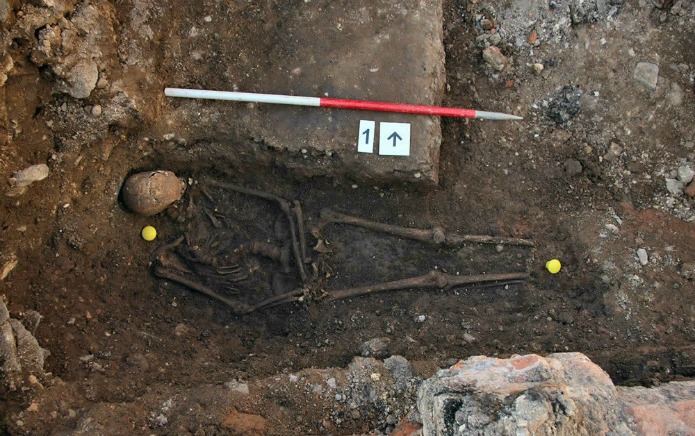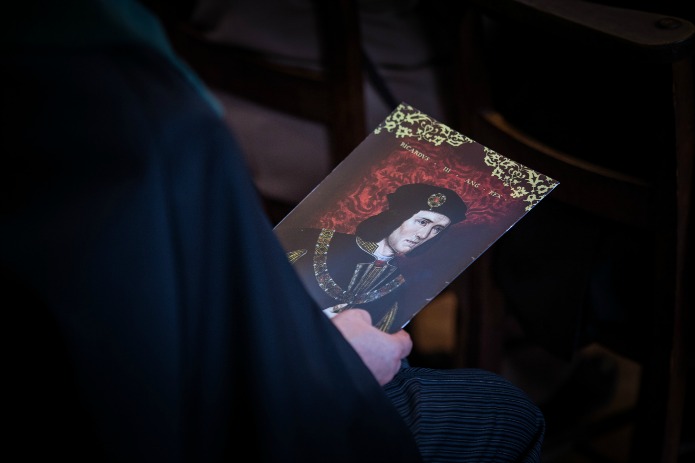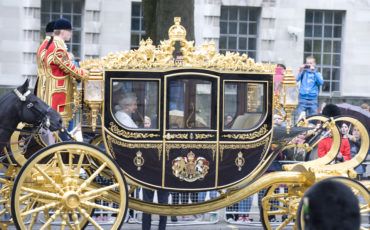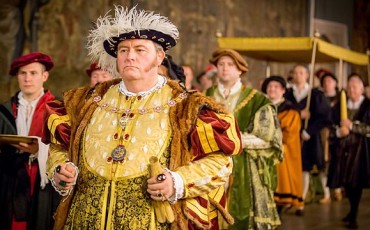In the Middle Ages, Edward the Confessor, King John and Richard II were exhumed, examined and put in new resting spots. So the reinterment of Richard III in Leicester Cathedral shortly before lunchtime on Thursday 26 March, after four days of pageantry and commemoration, follows ancient tradition.
The king in the car park – England’s most controversial monarch – will finally be laid to rest. Before the reburial, Richard’s remains are going on a tour of the area between Bosworth and the centre of Leicester. This was a journey they last took in the hours after the king was killed in battle on 22 August 1485 by Henry Tudor’s forces. Then, he was stripped, stabbed in the buttocks, slung over a horse, and hurled, hands bound, into a shallow grave. Now he will be paraded, saluted and prayed for in various churches, in both Catholic and Anglican ceremonies. Finally, his bones will be placed in a tomb carved from Swaledale stone, surrounded by engravings of white roses, the badge of the house of York.

King Richard III as found in the Leicester car park. Photo: © Flickr/University of Leicester.
Ever since he was lifted carefully out of that council car park on 5 September 2012, Richard’s remains have been prodded by researchers, broadcast across the world’s media and wept over by emotional Ricardians. By the time the tomb is closed, he’ll have been out of the ground for 30 months and 3 weeks, longer than the two years and two months for which he actually reigned. One study published in The Lancet described him as ‘an adult man with a gracile build and severe scoliosis of the thoracic spine’. The chronicler Polydore Vergil said he was ‘constantly biting his nether lip’ – well-worn molars in his skull may indicate that Richard ground his teeth. There is plenty that the bones have told us which we didn’t know before. It’s 96% certain Richard had blue eyes; 77% likely he was blond, at least in childhood. He ate good food, but roundworm laid eggs in his gut and he had several teeth pulled when he was young.

Requiem Mass for the Repose of the Soul of King Richard III. Photo: © Flickr/Catholic Church of England.
The DNA work on Richard’s remains didn’t just identify them as 99.999% his. It showed two ‘false paternity’ incidents (pregnancy through adultery) among his royal and noble relations at some point between the 14th century and today. We now know Richard lost his helmet, suffered nine blows to the head, dagger wounds to the jaw, cheekbone and to the top of his head, where several blows partially scalped him. The coup de grace was a blow from a pointed weapon delivered upwards though the base of his head with such force that the end of the weapon left a small chip on the inside of the top of his skull. The angle suggests he was prone, maybe kneeling, when it was delivered. The bones also suggest that after death Richard suffered ‘humiliation wounds’, amongst which a dagger driven through his buttocks which left marks on his pelvis.
Several members of the House of Windsor are going to pay tribute to their Plantagenet ancestor, including the Duke and Duchess of Gloucester and Sophie, Countess of Wessex.







Leave a Reply